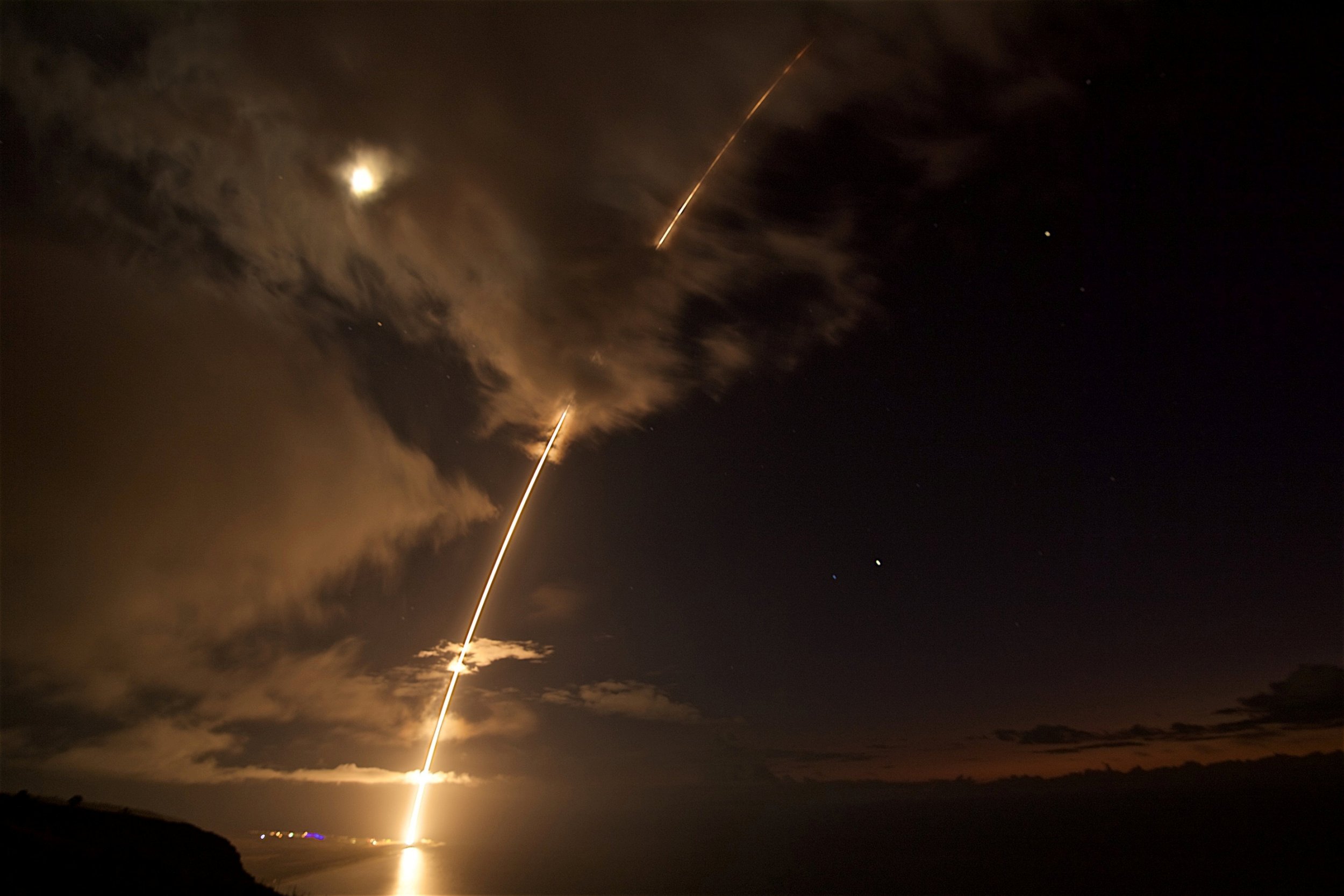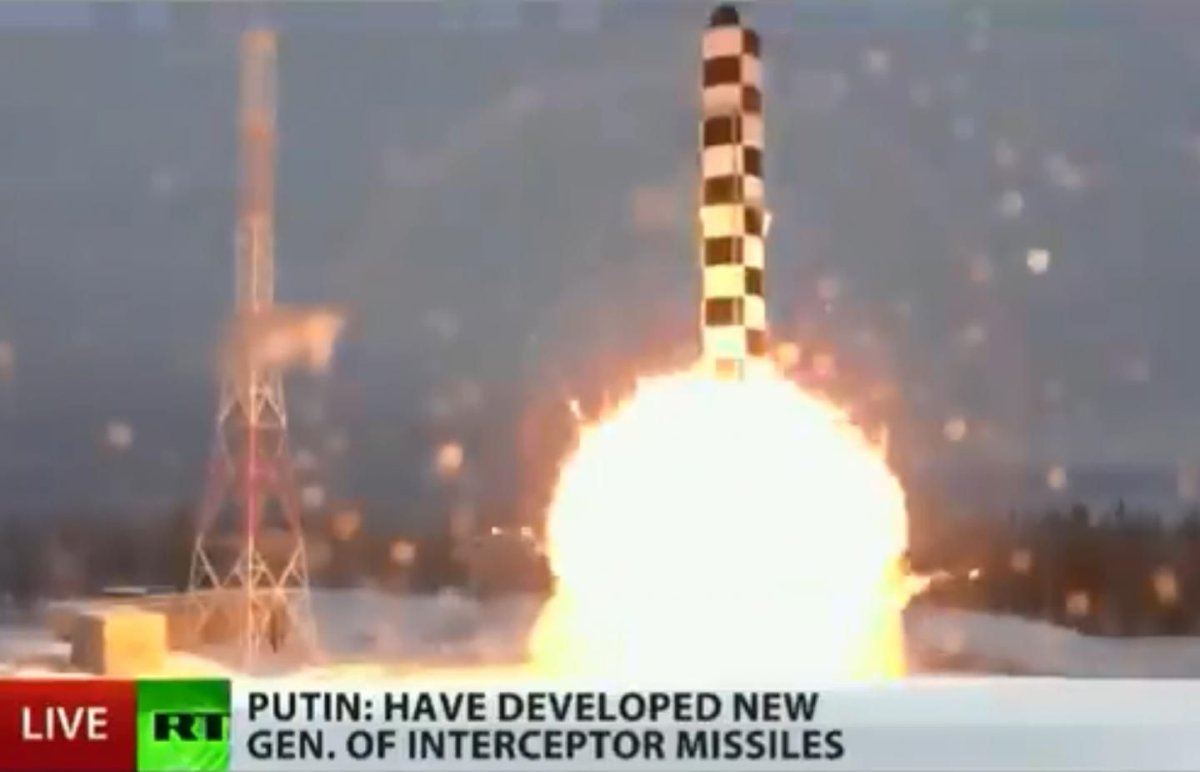
Russian President Vladimir Putin recently revealed new nuclear-capable weapons, claiming they could thwart even the world's most advanced missile defense systems.
He wasn't lying. The RS-28 Sarmat intercontinental ballistic missile (ICBM)—known to the NATO Western military alliance as SS-X-30 Satan 2—along with a nuclear-powered cruise missile, the Kanyon long-range torpedo and the Kinzhal hypersonic missile could all potentially be fitted with nuclear warheads and trump U.S. defenses. Putin explained his rationale for developing such weapons capable of "bypassing interception boundaries," which he said Moscow first announced plans for nearly 14 years ago.
Related: Russia's Satan 2 Nuclear Missile Is Aimed at This U.S. City, According to Putin's Video
"Why did we do all this? Why did we talk about it? As you can see, we made no secret of our plans and spoke openly about them, primarily to encourage our partners to hold talks. Let me repeat, this was in 2004. It is actually surprising that despite all the problems with the economy, finances and the defense industry, Russia has remained a major nuclear power," he told the Russian parliament as part of his State of the Nation speech Thursday.
"No, nobody really wanted to talk to us about the core of the problem, and nobody wanted to listen to us. You will listen to us now," he added.

The oft-delayed RS-28 Sarmat ICBM was said capable of being equipped with up to 10 or 15 nuclear warheads, each bearing 750 kilotons of destructive power. They are intended to replace the aging RS-36M, originally dubbed SS-18 Satan by NATO during the height of the Cold War in the 1970s. Instead of taking the traditional North Pole route, the RS-28 Sarmat could be launched over either the South Pole, facing only 30 anti-ICBM receptors that have proven only a 50 percent success rate under perfect test conditions, according to The National Interest.
Putin claimed the RS-28 Sarmat "has practically no range restrictions" and "is untroubled by even the most advanced missile defense systems."
The new nuclear-powered cruise missile unveiled Thursday was particularly significant because such a weapon has never been developed. The closest equivalent would be the Pentagon's ill-fated Supersonic Low-Altitude Missile, a mid-20th-century project to develop a massive Mach 3 cruise missile powered by a nuclear chain reaction. It was abandoned because of how incredibly dangerous even testing the weapon would be, as Popular Mechanics explained. The Russian cruise missile could potentially slide through U.S. missile defenses, which were designed to counter high-altitude ICBM attacks.
"It is a low-flying stealth missile carrying a nuclear warhead, with almost an unlimited range, unpredictable trajectory and ability to bypass interception boundaries. It is invincible against all existing and prospective missile defense and counter-air defense systems," Putin said.
"I will repeat this several times today," he added.

The Kinzhal hypersonic missile would also prove a formidable threat to the U.S. Putin said the missile would be fitted on to a high-speed carrier aircraft and would fly 10 times the speed of sound and maneuver mid-flight—overcoming not only all current, but proposed anti-missile defenses, to destroy targets within 1,242 miles with a nuclear or conventional blast.
The Kanyon nuclear torpedo, also known as the Status-6 Oceanic Multipurpose System, was described as a "doomsday weapon" in the Nuclear Posture Review published by the Pentagon in January. Leaked documents from 2015 suggested the weapon could carry a 100-megaton nuclear explosive that can travel up to 6,200 miles away at a depth of trajectory of up to 3,300 feet, according to BBC News.
The weapon would about as twice as powerful as the most powerful nuclear weapon ever produced, the roughly 50-megaton Tsar Bomba, built by the Soviet Union and tested in 1961.
Uncommon Knowledge
Newsweek is committed to challenging conventional wisdom and finding connections in the search for common ground.
Newsweek is committed to challenging conventional wisdom and finding connections in the search for common ground.
About the writer
Based in his hometown of Staten Island, New York City, Tom O'Connor is an award-winning Senior Writer of Foreign Policy ... Read more
To read how Newsweek uses AI as a newsroom tool, Click here.








